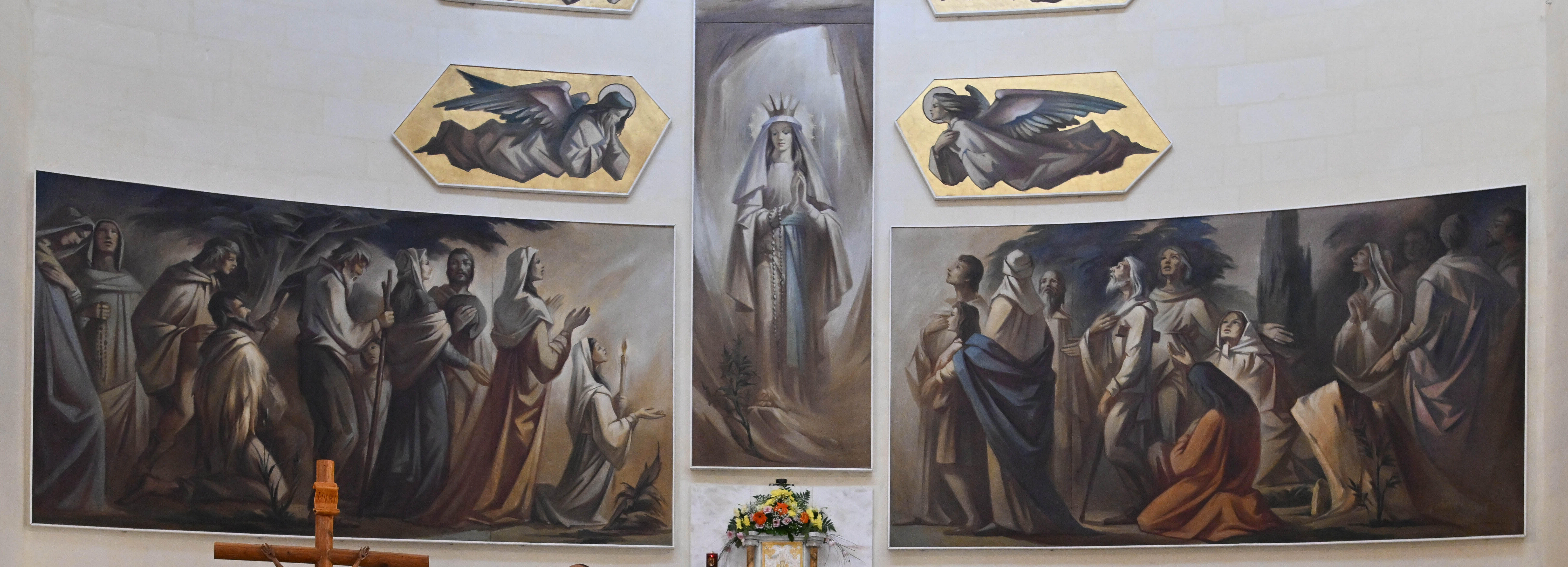
“Go out, therefore, into the main roads and invite to the feast whomever you find!”
The fourth reflection about the titular painting at the parish church of Our Lady of Lourdes, Paola
“Blessed are the poor in spirit, for theirs is the kingdom of heaven.
“Blessed are those who mourn, for they will be comforted.
“Blessed are the meek, for they will inherit the earth.
“Blessed are those who hunger and thirst for righteousness, for they will be filled.
“Blessed are the merciful, for they will receive mercy.
“Blessed are the pure in heart, for they will see God.
“Blessed are the peacemakers, for they will be called children of God.
“Blessed are those who are persecuted for righteousness’ sake, for theirs is the kingdom of heaven.
“Blessed are you when people revile you and persecute you and utter all kinds of evil against you falsely on my account. Rejoice and be glad, for your reward is great in heaven, for in the same way they persecuted the prophets who were before you.”
Matthew 5:3-11
Having examined the central figure of Mary, we shall now turn our attention to the two large paintings depicting people who have come with Saint Bernadette to pay their homage to Mary who had appeared so close to the deprived areas where they lived. Not only the poor residents were present during the eighteen apparitions, however. People from different walks of life flocked from everywhere, their number increasing by the day to the point that sometimes thousands would be present. Some were going there out of trust in the word of this young shepherd girl, who was the only one able to see the outstandingly beautiful Lady. Others went purely out of curiosity, while still others were sceptical or downright hostile.
In horizontal format, the two pictures combine to resemble a queue to the right and to the left of the Blessed Virgin. None of the men are wearing a hat—one man seems to be clutching a hat in his hand—and all the women are wearing veils around their heads, testimony to the devotion towards this awe-inspiring phenomenon that was going on and eager to listen to what the Lady had to say to Saint Bernadette: zealous for a word of grace also in their regard. To the extreme left, a man in a religious habit is fiddling with rosary beads.
The fifth figure on the right—if you start counting from the person nearest to the centre—is of a lame man resting on crutches. At the end of the same picture we see two other men, one with his back to us and pointing his finger down, the other one wearing a neatly trimmed, dark stubble gazing towards the spot where the Blessed Virgin appears—features indicating to us that he belonged to a social class above the rest. This area of the painting is quite dark in comparison to the rest of the scene. Through these two figures, Cremona includes also the sceptical or hostile observers who were there to investigate the phenomenon, so that we can say that the scene encompasses the whole of humanity.
This scenario reminds us of the parable of the king who gave a wedding banquet for his son, inviting all the people that servants could find in the streets, the bad as well as the good (see Mt 22:9-10), in particular the poor, the crippled, the blind and the lame (Lk 14:21). It is the gathering of those whom Christ terms blessed in the Beatitudes (Mt 5:3-12): the poor, those who mourn, the meek and the pure in heart, and who were receptive to the inheritance of grace that Mary wanted to impart to humanity through her apparitions, including those who were persecuted—although she never gave up, Bernadette was not always believed, and many times she was even impeded from going near the grotto of Massabielle.
We are reminded of these blessings that Christ promises to those who follow him on 1 November each year, Solemnity of All Saints. We could say that, both really and metaphorically, the saints consist of this motley gathering that is welcomed to the eternal wedding banquet. The saints are human beings coming from all walks of life whose paths are nevertheless united, each in their personal manner, with the Way who is Christ. Moreover, when we profess our belief in the communion of saints, we include with these persons ourselves too, still pilgrims on earth, seemingly still on the way, in motion.
What is your perception of the saints? Being your fellow believers in Christ, who are the saints whose intercession you ask for? Do you also keep in mind relatives, neighbours, or other individuals you knew, who lived such a genuinely Christian life that you ask them to intercede on your behalf?



